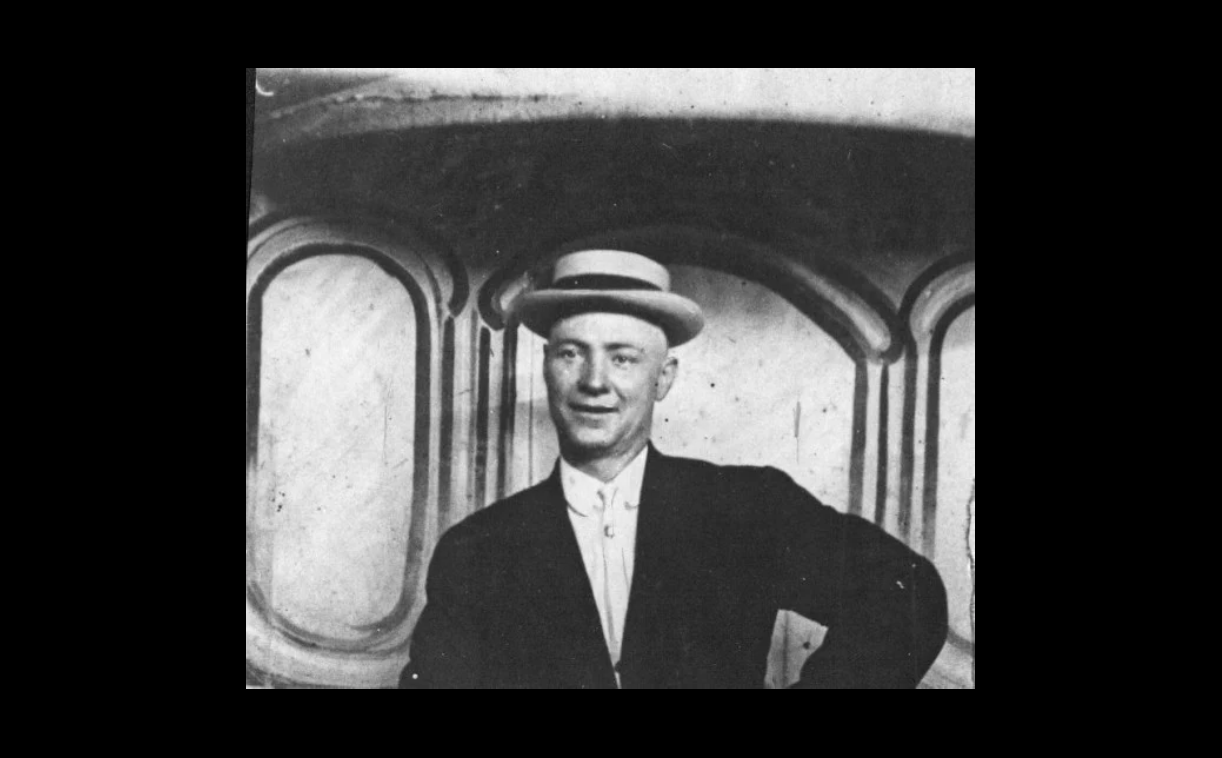A Post-Dispatch mailroom clerk becomes the first St. Louisan to die in World War I
Published: 23 February 2023
By Tim O’Neil
via St. Louis Post-Dispatch newspaper (MO) web site

David Hickey, the first St Louisan to be killed in action in World War I
David Hickey, the first St. Louisan to be killed in action in World War I. Hickey grew up north of downtown and was a shoe worker and amateur baseball player before he enlisted on April 27, 1917, at age 38. He was wounded by shellfire on Feb. 12, 1918, and died on Feb. 24. He is buried in Memorial Park Cemetery in Jennings, and Hickey Park in Baden is named in his honor. The year of this photo is unknown. Post-Dispatch file photo
David Hickey was 38 when he answered the patriotic drumbeat in April 1917 to fight in the Great War. He was assigned to a U.S. Army artillery battery in France at the village of Seicheprey, near the slaughterhouse known as Verdun.

David Hickey is first St. Louis casualty of WW I. St. Louis Post Dispatch 27 February 1918
Hickey had grown up just north of downtown and was a newsboy. He later worked in shoe factories and the Post-Dispatch mail room, where newspapers were bundled. He played on local amateur baseball teams and never married.
His distinction was posthumous: “First St. Louis Man Killed in France,” was the headline in the Feb. 27, 1918, Post-Dispatch, reporting that Hickey had died three days before of shrapnel wounds suffered on Feb. 12.
It was a big local story. The United States had entered World War I on April, 6, 1917, but still was forming its forces along the Western front when Hickey was fatally wounded. America’s first significant offensive didn’t take place until May 1918. Not until September did the Army begin its major push at Saint-Mihiel, near the village of Seicheprey.
Hickey probably was hit by some of daily shellfire that routinely tossed dirt along the shattered front for four numbing years. Only minor engagements were reported in France on Feb. 12, 1918. The headlines were about the Russian revolutionary government’s withdrawal from the war.
When word of Hickey’s death reached St. Louis, reporters interviewed state Sen. Michael Kinney, who knew him from the old Bates School north of today’s Laclede’s Landing. Kinney said Hickey had sent a letter in November asking the senator to notify his sister at 5872 Garfield Avenue about his service in France.
“Dave was a happy-go-lucky chap always ready to do a pal a good turn,” said Kinney.
But the senator couldn’t locate Hickey’s sister, Celia Ebeler, who had moved. Newspapers described Hickey and Ebeler as “estranged.”
Hickey was the first of 1,072 men from the St. Louis area who died in uniform during World War I. America’s total military deaths were 116,500, a small number compared to other combatants. France and Germany together lost at least 300,000 soldiers killed in the grinding battle for Verdun in 1916.
Hickey was buried in France, as were almost all of America’s war dead. But in 1921, the government brought back the remains of 7,264 to symbolize the nation’s loss. Hickey’s casket was among 22 bound for St. Louis on a special train.
His sister, Ebeler, was in the front row at the St. Louis Armory, 3676 Market Street, for a memorial service on July 27, 1921. Nearly 1,000 people took part. Hickey was reburied in the American Legion section of Memorial Park Cemetery in Jennings.
In 1939, American Legion Post 235 in St. Louis was chartered in Hickey’s name. Two years later, the city established Hickey Park at Goodfellow and Bircher boulevards, but the land soon was taken to build the massive ammunition works on Goodfellow for World War II.
Read the entire article on the St. Louis Post-Dispatch web site.
External Web Site Notice: This page contains information directly presented from an external source. The terms and conditions of this page may not be the same as those of this website. Click here to read the full disclaimer notice for external web sites. Thank you.



